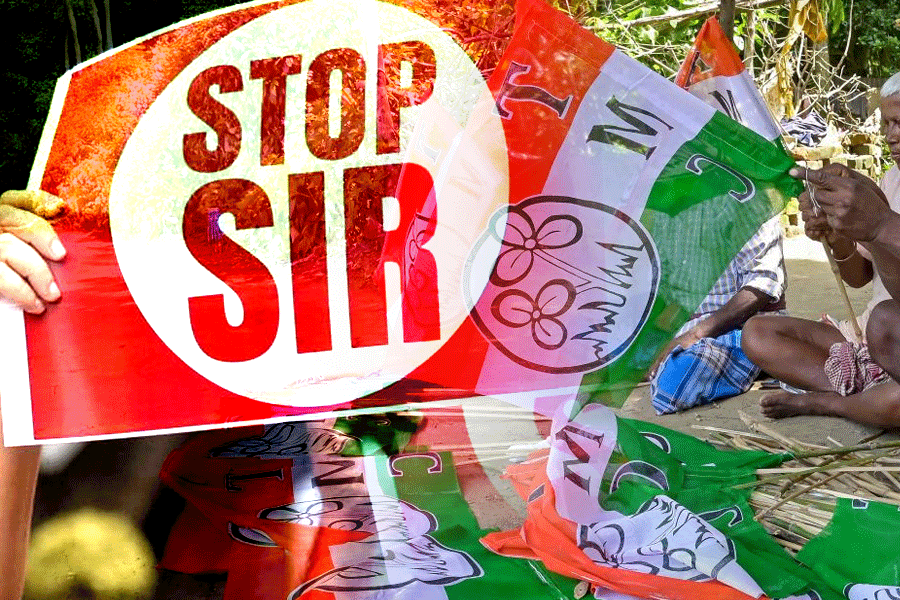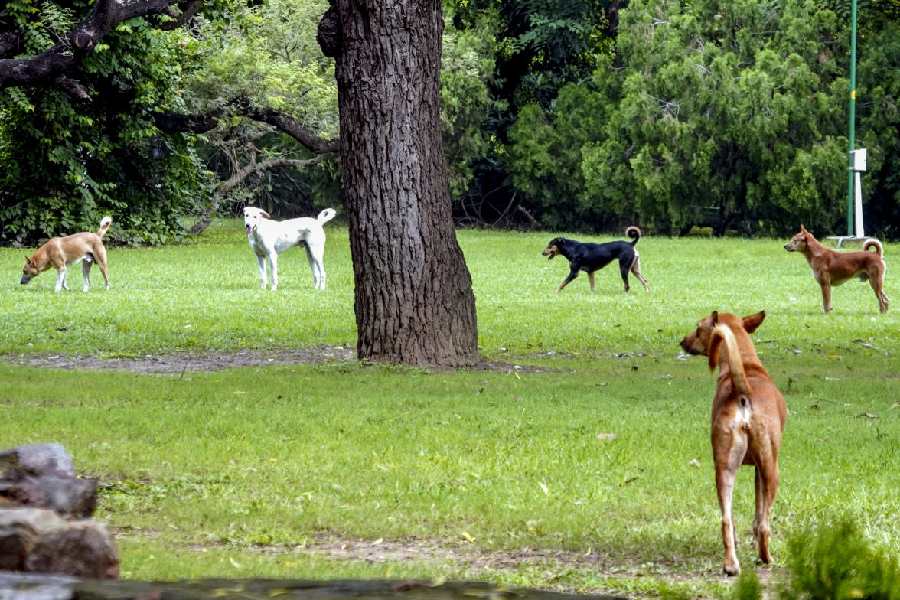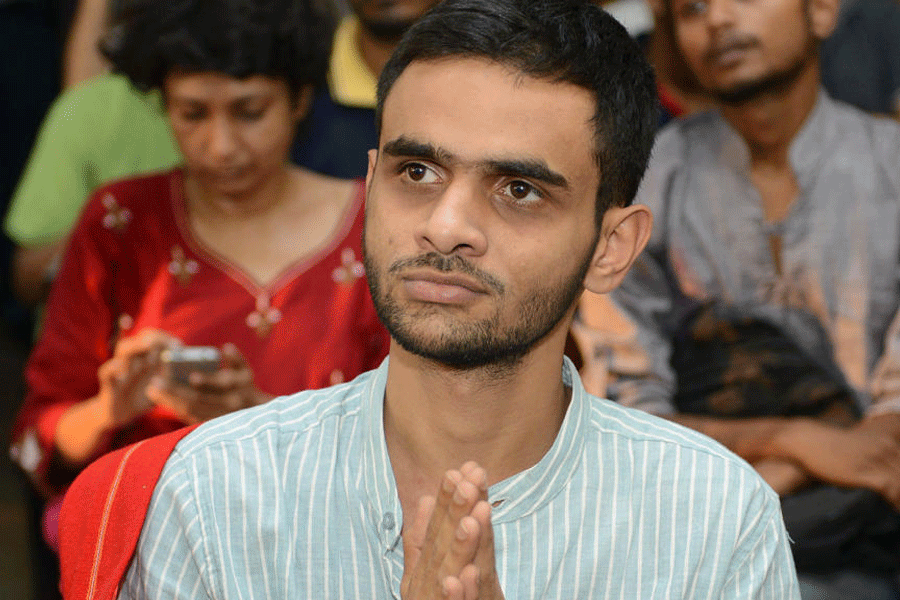 |
| Sunil Gavaskar, wife Marshneil and son Rohan (right) in Puttaparthi on Monday. Picture by G Vijayalakshmi |
Puttaparthi, April 25: As the clock struck 7, the sound of a Sai bhajan wafted across the subdued air. The dusty town had woken up to another morning, but minus its soul.
Sai Baba is dead, and with his passing an air of foreboding has settled on Puttaparthi. The question on everybody’s lips is: Now what?
College principal and English professor Anil Kumar, who used to translate Sai Baba’s speeches into English for foreign devotees, summed up the mood. “I will stop translating from now on,” he said.
If that betrayed a sense of resignation, Puttaparthi, the once-arid hamlet 435km from Hyderabad, was hiding it well today.
The three streets in the town were watered and cleaned to meet the rush of visitors to Prashanti Nilayam, Sai Baba’s ashram where the body of the spiritual guru has been placed for darshan till Wednesday’s last rites.
The scent of perfumes and flowers drifted through the air as smoke curled from burning incense. Volunteers kept watch over the crowd of devotees.
At Puttaparthi airport, flights landed every half an hour. The rows of shops which remained shut yesterday opened partially to cater to the rush of visitors. Mobile canteens had sprung up all over the parking lots.
Puttaparthi had geared for what, as many of its residents apprehend, could be its last show.
Revenue officials said Sai Baba’s ashram was a source of livelihood for nearly 25,000 families. “There are 150 flower vendors, 200 cloth merchants, 200 novelty shops, 15 hotels, 50 lodges, 450 drivers, 600 taxi operators and nearly 4,000 day labourers who depend on Sai Baba’s ashram. With Sai Baba gone, a bleak future looms on them,” said an official.
Andhra Pradesh chief minister Kiran Kumar Reddy today repeated that the government was not interested in interfering with the affairs of the ashram and the Sathya Sai Central Trust. “The government only wants to safeguard the assets and activities of the trust from falling into wrong hands,” he said.
Satyajit, the spiritual leader’s personal attendant since 2002 and seen as a possible contender for the post of head of the Sathya Sai trust, revealed the fear lurking behind the flurry of hectic feet and hubbub of tense voices. “There are 2,000 of us dedicated volunteers for life who have been working for Sai Baba in various capacities in the ashram, hospital, kitchens and schools and colleges (run by the trust),” he said, adding that most ashram workers felt they had been “orphaned”.
In their moment of gloom, some residents, however, looked back at the happy days when their presiding “deity”, who passed away on Sunday at the age of 84, was alive.
One said they were lucky because Sai Baba chose to settle down in Puttaparthi rather than Uravakonda, about 65km away where a 14-year-old R. Sathyanarayana Raju had walked out of school to sit in meditation on a boulder. “Sai Baba had come back to Puttaparthi on his mother’s request and said he would conduct all his activities from there only,” said Prasad Rao, who teaches in a school run by the Sai Baba trust.
Some ashram trustees pointed out that Sai Baba chose to stay put in his native Puttaparthi. The only time he stepped outside India, they said, was when he visited Uganda where he built nearly 400 houses for the homeless there.
Sai Baba, they said, reached out to millions of devotees across 166 countries, but never travelled to the West. The West, they said, came to him.
Local astrologers say death came at an auspicious moment. “Sai Baba died at Surya tithi, Surya varam (Sunday) and Surya nakshatram,” said popular palmist and numerologist Srinivas Gargeya.
Lost in the gloom of death, that maybe the mortal godman’s hidden blessing for “orphaned” Puttaparthi.











